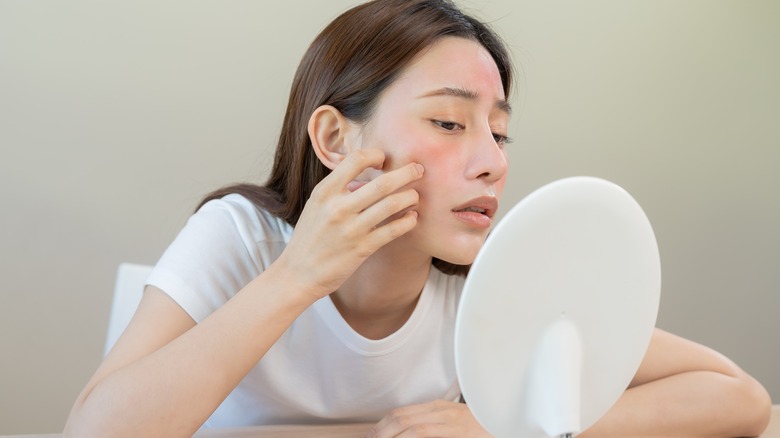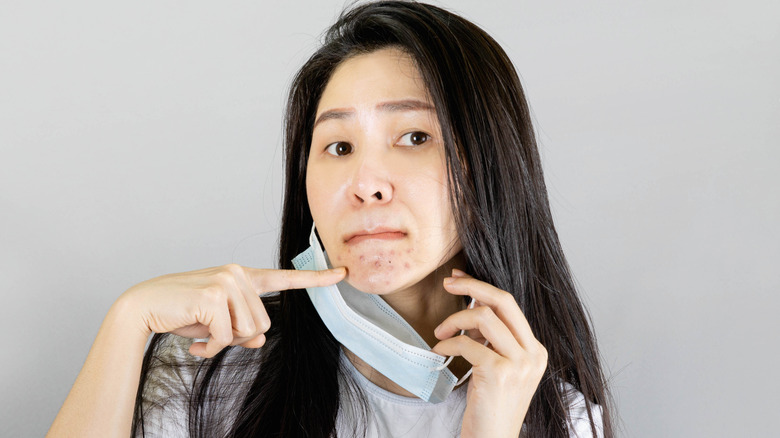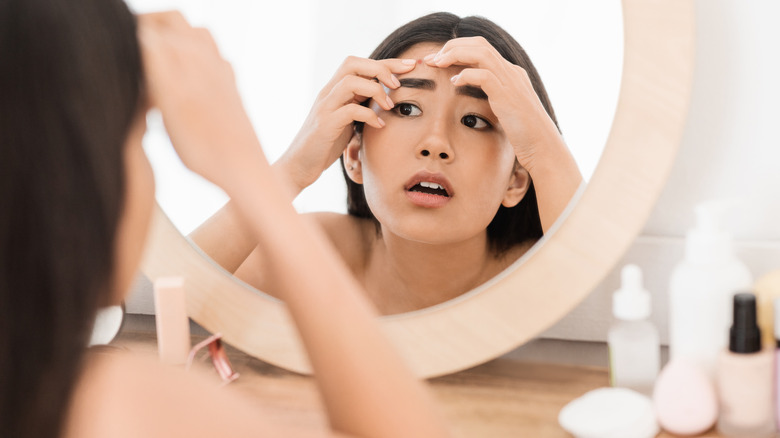Glam Survey: What Is Your Biggest Acne Trouble Spot?
Acne has served as a plague on humanity for centuries. According to the International Journal of Women's Dermatology, the first known instances of acne being referenced date back to ancient Greece and Egypt. At that time, the condition was described using the terms ionthoi and varus. The medical term used today, acne vulgarus, was first officially adopted in 1840. Much like the humans of today, acne sufferers throughout history have been treated with natural remedies like honey and botanicals, often to no avail. It wasn't until the 1950s that treatments like peroxide, retinoids and oral medications became available, sometimes with severe side effects.
There is still no cure for acne, but between advancements in treatments and in the effectiveness of makeup, it can be managed. For people with severe acne, the most difficult of its effects are often psychological and center around shame, anxiety, depression, and embarrassment, as detailed by the American Academy of Dermatology Association. How much your acne bothers you is typically tied to where it presents the most on your face or body. We asked 587 Glam readers where their biggest acne trouble spot is. Here's what they had to say.
Chin voted most troublesome
While it wasn't quite a landslide, most Glam readers, 26,02% surveyed, reported that their chin is their biggest acne trouble spot. According to MedicalNewsToday, acne that appears on the chin tends to be hormonal in nature. This means you're more likely to struggle with chin blemishes if you're going through puberty, menstruating, or are pregnant. Of course, there are certainly exceptions. Luckily, spots on the chin aren't always as noticeable as those front and center on the forehead or nose.
It is important to note that other skin conditions can sometimes be confused for chin acne. These include ingrown hairs, also known as folliculitis, and rosacea (via Cedars Sinai). If you shave your chin area, you are much more likely to struggle with ingrown hairs, which can present as inflamed pustules very similar to pimples. Rosacea typically causes redness and visible blood vessels but can sometimes evolve into pus-filled bumps that also resemble pimples. If your chin acne is severe or persistent, consider visiting your doctor or a board-certified dermatologist.
Forehead and cheeks tie for second place
The forehead and the cheeks both received 128 votes (21.81%). According to Healthline, acne in these areas is associated less with hormonal changes and more with bacteria from hands or phones and stress levels. Since people are more likely to rub or touch their upper face, especially when stressed or tired, bacteria from their hands can be transferred and make their way into the pores. Holding a phone against your cheek often can have a similar effect.
Since areas like the forehead are very difficult to hide, prominent acne there is even more likely to trigger anxiety, shame, depression, or even suicidal thoughts (via Patient). If you're suffering from severe acne and the feelings that come along with it, don't forget to care for yourself along with caring for your skin. This includes seeking professional treatment for symptoms of depression and anxiety alongside treatment for acne. You deserve whole health and wellness, regardless of the state of your skin.
If you or someone you know needs help with mental health, please contact the Crisis Text Line by texting HOME to 741741, call the National Alliance on Mental Illness helpline at 1-800-950-NAMI (6264), or visit the National Institute of Mental Health website.


